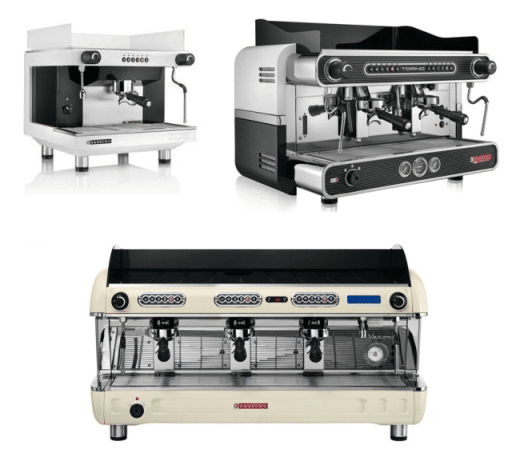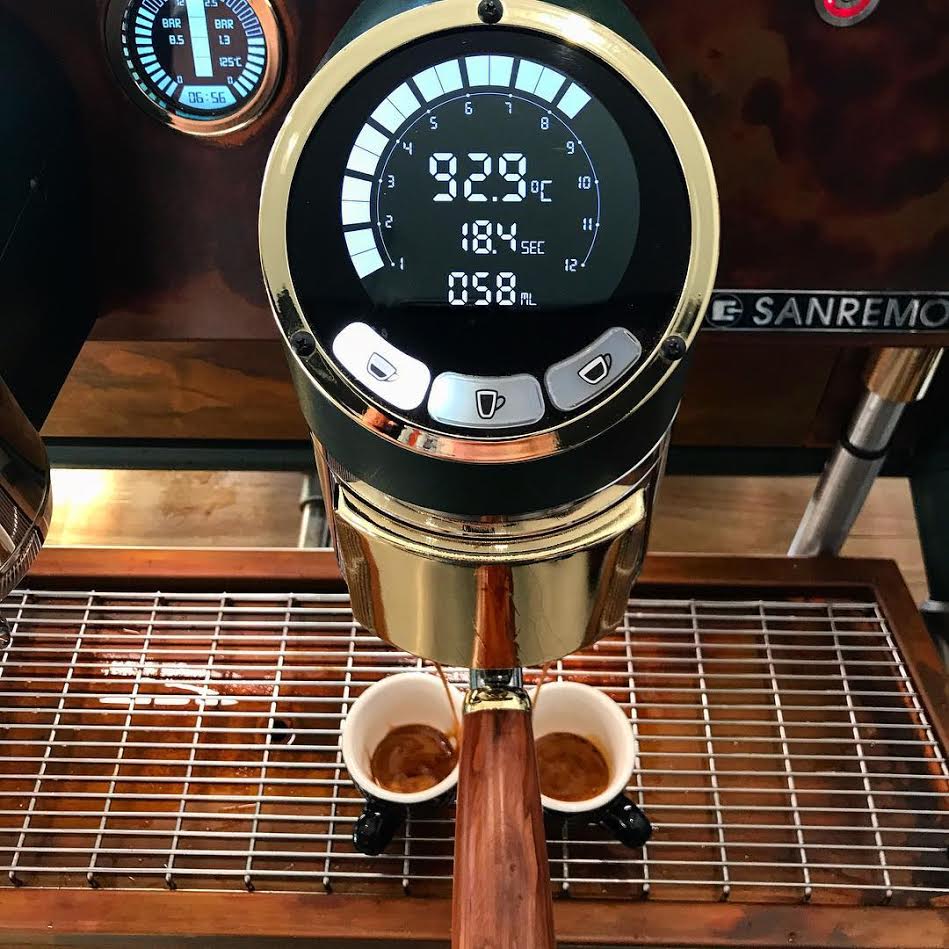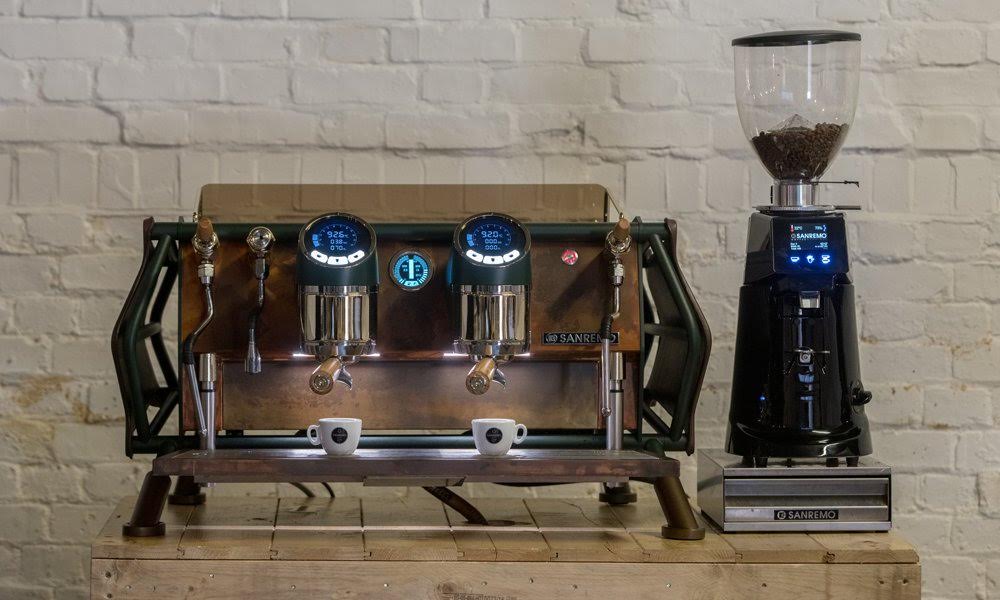Buying Guides
Guide to Coffee Machine Sizes & Output
Those researching commercial espresso machines for the first time very often ask us for help and guidance as to which size of espresso machine they require.
Like many important business decisions affecting cafe and coffee shop owners, the answer is not easily reached.
We’ve put together this mini-guide on coffee machine size to give you a greater understanding of the role groupheads play in espresso-based drink production,
The guide also looks at which other factors influence output and what considerations you must make when determining which size machine is right for your business.
What is a Grouphead?
Group heads, sometimes shortened to ‘groups’ simply refers to the component on an espresso machine that allows the connection with a portafilter. During the process of extracting espresso, hot water is forced through the grouphead under pressure.
Similar to a shower head, the group head contains holes that evenly distribute the pressurised water over the surface of the espresso grinds in the portafilter basket, which is then released as delicious espresso.

How does the number of Groupheads influence Coffee Output?
Each group on a coffee machine is able to produce 2 single shot’s of espresso at a time. Typically a small, compact commercial coffee machine will incorporate 1 group head. A standard coffee machine is likely to be a 2 or 3 group machine, and a very high capacity machine will have 4 plus group heads.
Simply put, the more group handles your espresso machine can accommodate, the more coffee you can produce at a given time.
A Coffee Machine with more Groupheads means I can sell more coffee, right?
Not quite. Here’s where a few more factors come into consideration. More groupheads do give you the potential to produce more coffee drinks, but there are some crucial limitations, including:
- Number of baristas working at the same time
- Skill and experience of the baristas
- Size of the coffee machines boiler
- Number of steam wands
- Speed of the coffee grinder
The skill and number of baristas working at the same time have a huge bearing on drink production. As an example, a large 4 grouphead coffee machine operated by a single barista would achieve less output compared to 2 baristas operating a smaller 2 group machine.
A key input in coffee making is water. Hot water is heavily required in milk steaming and can quickly become depleted when numerous drinks are made, forming a bottleneck in your production chain.
A coffee machine that benefits from a generous number of groupheads can often be restricted with a small boiler as baristas are left waiting for water to reach the desired temperature before they can proceed with drink creation. A large boiler or multi-boiler machine is much more suited to handling busy periods, providing a constant supply of water to ensure a constant brew temperature and plentiful supply of steam for milk drinks.
The Benefits of a Multi Boiler Machine

When water is drawn from the boiler, the boiler will refill with cold water- drastically reducing the boilers ability to exchange heat to the brewing water. Using steam from the boiler will also drop the temperature, as the boiler’s temperature is directly related to its pressure. It takes great skill to get the best from heat exchange designs.
In comparison, multi-boiler machines are much simpler. They have the main boiler, used only for steam production. The brewing water comes from one or more independent boilers that are electronically controlled by a thermostat to the ideal brewing temperature. So unlike heat exchange machines, the temperature of the brewing water will not fluctuate when steam or hot water are used, and the barista can just use a short flush regardless of how busy or quiet coffee service is.
Some more modern multi-boiler machines have extra features to aid brewing temperature, such as pre-heated water feeds- these mix water from the main boiler with fresh cold water and feed the smaller brewing boilers, so that temperature does not drop when they refill. Heating elements in the group heads stop the groups from cooling down when the handle is removed.
Key Points
- How many baristas will you have working at the same time? If you’re only ever going to have 1 member of staff operating the coffee machine then its unlikely you will ever need a coffee machine with more than 2 groupheads.
- Can you accommodate a large commercial coffee machine? Remember to take into account the space required for associated equipment, including the grinder and knock-out draw.
Ultimately, it doesn’t come down to how many coffees you make, or anticipate on making in a day, it comes down to how many shots you want to be able to produce at the same time and the likely number of coffees your baristas will be tasked with making during busy spells.
Even small establishments opt for larger, standout espresso machines on the basis that customers make decisions based on what they see first. An attention grabbing professional coffee machine is likely to influence consumer choice and increase the amount of revenue you can generate through adding high quality coffee to your drink offerings.
For help and advice on finding a coffee machine thats right for your business, please speak to a member of our team today on 01274 595841.




Question, I’m currently looking for a espresso machine for home use. We drink on average 6 till 8 cups of coffee shots. But at the moment we’re using the Italian mokapot… Not quite espresso but definitely better then drip coffee or Nespresso crap.
But since we build a new house and have the space to place a proper espresso machine (and the fact that we LOVE coffee)
I’m with the question if I should look for a 1 head or will be better off with a double head.
Hi, thanks for getting in touch. For home use, I would definitely recommend a 1 group, but a dual boiler. As this would give you a better & consistent brew temperature, without affecting your steam.